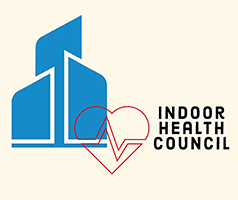Two Commonly Asked Questions About Green Cleaning and Sustainability
“In the context of sustainability, when can we use nontoxic natural cleansers and disinfectants such as baking soda and peroxide? When do we actually need something stronger?”
These are good questions, and the answer is threefold as cleaning is the removal of unwanted matter, and disinfection is the removal or inactivation of harmful germs. The first part is, “What do you want to remove?” The second is, “What is the least offensive way to do it?” And the third is, “Which germs are you trying to remove or inactivate?”
Use of “nontoxic”, while well-intended, is somewhat meaningless as there is no consensus definition. Water can be toxic in large enough amounts, while some chemicals in parts-per-billion can disrupt hormones, so a better approach is the formula: Risk = Hazard x Exposure + Vulnerability.
This should be weighed based on the tradeoffs: exposure to the cleaning agents versus exposure to the unwanted matter. Also, sometimes “natural” products pollute rather than clean, for example, essential oils may contain terpenes that react with ozone to form formaldehyde.
“Stronger” is likely not the right term either as efficacy depends on what you are trying to remove or inactivate. We like to “touch base” first, that is, define the nature of the soil (its base) and find the best way to remove it.
This may be a physical process not a chemical one. We prefer a non-petrochemical approach to cleaning most above-floor surfaces, i.e., using a microfiber cloth and water, then folding and flipping the cloth to use all eight surfaces. This practice is also sustainable as microfiber is a petrochemical product but reusable. On floors, we prefer an extraction method using water and vacuuming as the best way to remove soils sans harsh chemistry.
Regarding disinfection, cleaning removes germs, so better cleaning is the first line of defense, then inactivating pathogens using the most benign method that works for the application. More benign “killing” methods may include hot steam vapor, UVC light, and EPA-registered disinfectants.
Safer disinfection comes under the heading of “contextual excellence” (a term used by Dr. Bill Bellows of the Deming Institute). Dr. W. Edwards Deming said: “Suppose that you tell me that my job is to wash this table. You show to me soap, water, and a brush. I still have no idea what the job is. I must know what the table will be used for after I wash it. Why wash it? Will the table be used to set food on? If so, it is clean enough now. If it is to be used for an operating table, I must wash the table several times with scalding water, top, bottom, and legs; also the floor below it and around it.” (The New Economics for Industry, Government, Education)
Thus, the appropriate sustainable cleaning and disinfecting intervention depends on the situation.
We welcome input on this post.








